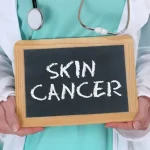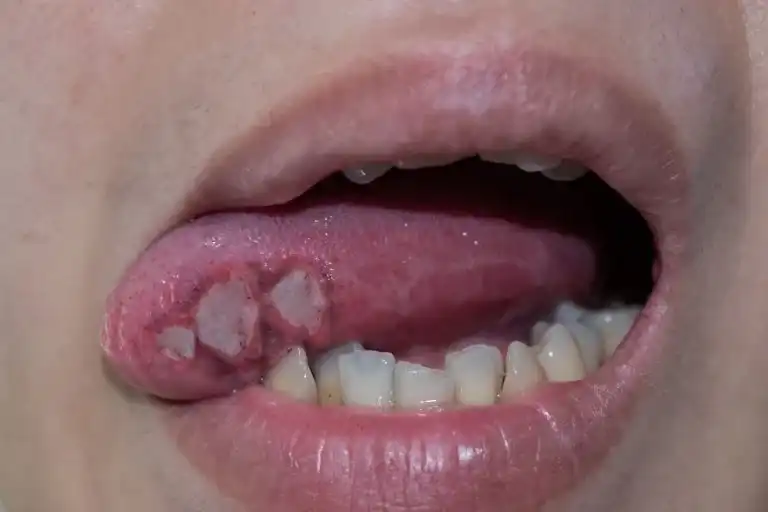Skin cancer is a medical condition that is caused by the proliferation of abnormal cells within the skin tissues. Generally, as the skin cells age and die, new skin cells are formed to replace them. However, when this process is not functioning as it should, the growth of skin cells increases abnormally. These cells can be benign (non-cancerous) and do not spread or cause harm, or sometimes, they can be cancerous. If skin cancer is not detected in its early stages, it may spread to surrounding tissue or other parts of the body. Fortunately, most cases of skin cancer are reversible if discovered and treated in their early stages. Schedule a skin cancer screening at Wockhardt Hospitals today to catch it early and ensure your well-being.
Understanding Skin Cancer
Skin cancer is a cancerous disease that involves the growth of abnormal skin cells. Normal skin cells have a fixed cell cycle; they grow old and die eventually within that time period. However, in the case of skin cancer, this process doesn’t occur as it should and causes faster growth of skin cells. These rapidly growing cells can be non-cancerous (benign) or cancerous in nature. The primary cause of skin cancer is overexposure to sunlight. Skin cancer develops when mutations occur in the DNA of skin cells, which result from an external trigger, often ultraviolet light. The mutation causes skin cells to start growing uncontrollably and forming a mass of cancer cells.
Skin cancer is most commonly observed in areas of the skin exposed to the sun, mainly due to ultraviolet light. However, it may also occur in areas not exposed to sunlight. Getting checked by a doctor if any noticeable changes occur on any part of the skin can lead to early detection and treatment of skin cancer, even if it is not malignant. Early detection of skin cancer provides the greatest chance for successful treatment.
Types of Skin Cancer
Skin cancer usually occurs in exposed parts of the body, such as the face, scalp, neck, chest, arms, and legs. However, it may also occur in areas which don’t receive any sunlight, such as the palms, under the fingernails, and around the genitalia. Based on which part of the skin has been affected, skin cancer can be categorised into three main types:
- Basal Cell Carcinoma: This usually occurs in the areas exposed to the sun, such as the face and the neck. The basal cells in the lower part of the epidermis, that is, the outer layer of the skin, are affected, leading to bumps, scar-like lesions, and bleeding sores that don’t heal.
- Squamous Cell Carcinoma: This type of cancer occurs in the squamous layer of the skin on the face, ears, and neck. There can be a form, red nodule, or scaly lesions on the skin.
- Melanoma: Melanoma occurs in the melanocytes, which are the melanin-producing cells of the skin and give the brown pigmentation of the skin. It can develop anywhere in the body and even in pre-existing moles in the body. Melanoma can occur on skin, which is not exposed to the sun. Melanoma can appear as dark lesions in the affected area, or in a mole that changes in shape and colour, and even cause lesions that itch and burn.
Causes of Skin Cancer
Skin cancer caused by changes/mutations in the DNA of skin cells is the most prominent one. These mutations cause skin cells to proliferate out of control and aggregate into a mass of cancerous cells. Most skin cancer causes are unidentified. Risk factors, however, may increase a person’s likelihood of getting skin cancers like Melanoma.
1. Exposure to UV light – Multiple types of skin cancer are significantly increased by UV radiation exposure. Among the sources of UV light exposure are:
- Sun
- Tanning beds
- Sun lamps
2. Moles – Skin cancer is not usually indicated by moles. However, if one has a lot of them, they have a higher chance of turning into melanoma.
3. Family History – A person’s chance of developing melanoma increases if their parents, siblings, or children do have the condition. Experts advise the following if a person has a family history of skin cancer:
- Self-skin checks should be done every month.
- Use sunscreen and other sun protection measures.
- See a dermatologist frequently to get the skin examined.
4. Compromised Immune System – It is more likely that someone may acquire skin cancer if other illnesses or medical procedures weaken their immune system. The immune system of a person could be damaged if:
- They have undergone chemotherapy
- Have an autoimmune condition
- Take certain medication
5. Older Age – Although skin cancer can occur in adolescents and young adults, it usually affects those over the age of 30.
Symptoms of Skin Cancer
An abnormal growth on the skin, such as a mole, is the primary skin cancer symptom. Some other symptoms may include:
General skin cancer signs are:
- A new skin lesion or changes to an existing spot’s sizes, form, or colour.
- An area of skin that hurts or itches
- A sore that doesn’t heal and bleeds or crusts
- A red or skin-coloured glossy lump on the skin’s surface.
- A growth that has a raised edge and a crusty or leaking centre
- An inflammatory growth
- An ill-defined growth that resembles a scar
Skin Cancer Symptoms Based on Types
According to the kind of cells affected, there are many types of skin cancer. Skin cancer is classified into three main types:
- Basal cell cancer (BCC),
- Squamous cell cancer (SCD), and
- Melanoma.
Each form of skin cancer has its unique set of warning indicators.
Symptoms of Basal Cell Carcinoma
This type of skin cancer is mainly due to an alteration in the skin, such as a growth or an unhealing wound. Typically, these skin alterations exhibit one of the following skin cancer signs:
Basal Cell Carcinoma skin cancer signs include:
- A transparent, shiny lump that resembles skin and may bleed. It may also develop a scab on top.
- A lump that is brown, black, blue, or has dark patches on it, and it has a slightly elevated, transparent border.
- A scaly, flat area with a raised edge. These patches might get fairly huge over time.
- A whitish, waxy, scar-like lesion with no apparent line.
Symptoms of Squamous Cell Carcinoma
Squamous cell carcinoma typically develops on sun-exposed body parts, including the face, ears, and hands. It can also develop on the genitals, the soles of the feet, or the inside of the mouth. Symptoms may include:
Squamous Cell Carcinoma skin cancer signs include:
- A nodule, a hard growth on the skin. The nodule may resemble the skin colour or seem pink, red, black, or brown.
- A flat sore covered in a crust of scales.
- A hard, itchy lip patch that might erupt into an open sore.
- A fresh scar or sore over an existing sore or elevated region.
- An uncomfortable or abrasive spot inside the mouth.
Symptoms of Melanoma
Melanoma can appear anywhere on the body, in apparently healthy skin, or in a mole that has already existed and turned malignant. Men with melanoma typically develop the disease on their faces or trunks. This form of cancer typically appears on the lower legs in female patients. Melanoma may develop on skin that has not been exposed to the sun in both men and women.
Melanoma skin cancer signs include:
- An alteration to an existing mole.
- New pigmented or odd-looking skin growths appear on the skin.
- A burning or itching sore that hurts.
- Dark lesions on the hands, feet, soles, or mucous membranes lining the mouth, nose, vagina, or anus.
Less Prevalent Forms of Skin Cancer Symptoms
- Kaposi Sarcoma – This unusual kind of skin cancer forms red or purple spots on the skin or mucous membranes by growing in the blood vessels of the skin.
- Merkel Cell Carcinoma – In hair follicles as well as on or just under the skin, Merkel cell carcinoma develops hard, glossy nodules. The head, neck, and trunk are the areas where it often develops.
- Sebaceous Gland Carcinoma – This rare and severe cancer begins in the skin’s oil glands. Sebaceous gland carcinomas, which often manifest as hard, painless nodules, can arise anywhere, although the majority occur on the eyelid.
What are the Risk Factors for Skin Cancer?
Although anybody can get skin cancer, certain individuals are more prone than others to develop the disease. These include:
- Individuals with naturally fair skin.
- Those with a family history of skin cancer are often at a higher risk.
- Exposure to substances containing coal or arsenic.
- Spending a significant amount of time working or playing in the sun.
- Having a history of sunburns or being easily sunburned.
- Having undergone an organ transplant.
- Taking immune-suppressive or weakening medications.
- Undergoing UV light therapy for skin conditions such as psoriasis or eczema.
How is Skin Cancer Treated?
The size, kind, depth, and location of the lesions will determine the treatment choices for both skin cancer and actinic keratoses, which are precancerous skin lesions. If the cancer is small and only affects the skin’s surface, sometimes a skin biopsy is sufficient to remove all of the affected tissue. Other commonly employed treatments for skin cancer, either alone or in combination, include:
Freezing
Cryosurgery, or freezing, is a minimally invasive treatment for certain skin cancers. Liquid nitrogen or another freezing agent is applied directly to the tumour, causing the cancer cells to freeze and die. This method is often used for small basal cell carcinomas and precancerous lesions, but it may require multiple sessions for complete eradication.
Excisional Surgery
Excisional surgery is a standard treatment option for skin cancer, especially for basal cell and squamous cell carcinomas. During this procedure, a surgeon removes the tumour along with a margin of healthy tissue to ensure that all cancer cells are eliminated.
Curettage and Electrodessication
Curettage and electrodessication is a two-step procedure that involves scraping away the tumour using a curette (a sharp spoon-like instrument) and then cauterising the area with an electric needle to destroy any remaining cancer cells. This method is suitable for smaller, non-melanoma skin cancers.
Mohs Surgery
Mohs surgery is a highly specialised technique for treating skin cancer, particularly for tumours located in critical areas like the face. During Mohs surgery, the surgeon removes thin layers of tissue, examining each one under a microscope in real-time to ensure complete removal of cancer cells. This precise method minimises damage to surrounding healthy tissue.
Radiation Therapy
Radiation therapy uses high-energy beams to target and destroy cancer cells. It is often employed for skin cancer cases where surgery may not be appropriate, like large or recurrent tumours.
Chemotherapy
Chemotherapy uses medicines to eradicate cancerous cells. Anti-cancer creams or lotions can be administered directly to the skin to treat cancers that are restricted to the epidermis.
Photodynamic Therapy
Photodynamic therapy is a minimally invasive procedure that combines a light-sensitising drug with light exposure to kill cancer cells. It is used for superficial skin cancers and precancerous lesions.
Biological Therapy
Biological therapy is a cutting-edge approach to treating advanced skin cancers. It works by boosting the body’s own immune system to target and attack cancer cells.
Conclusion
If you have any concerns about new growth or are experiencing any of the symptoms mentioned above, you can consult our top medical specialists at Wockhardt Hospitals. Our hospital hosts renowned specialists equipped with advanced technology. Each patient receives a customised treatment plan tailored to their requirements. Our dermatology team works with experts from various departments to ensure comprehensive and effective treatment.
FAQs on Skin Cancer
Q. Which hospital offers the best care for skin cancer patients?
Wockhardt Hospitals is regarded as one of the top skin cancer treatment facilities in India, providing a variety of cutting-edge procedures along with experienced physicians.


















